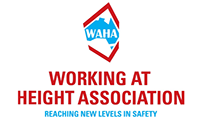Loadwise Australia's Workplace Health and Safety Policy
Loadwise Australia is committed to ensuring the health, safety, and welfare of staff and learners at all worksites and training venues and is bound by the requirements of the Work Health and Safety Act & Regulations 2011.
Requirements of the WHS Act
The WHS Act provides a framework to protect the physical and mental health and safety of workers, learners, and other people who might be affected by the work.
A guiding principle of the WHS Act is that all people are given the highest level of health and safety protection from hazards arising from work, so far as is reasonably practicable. The term ‘reasonably practicable’ means what could reasonably be done at a particular time to ensure health and safety measures are in place.
The WHS Act identifies that the Persons Conducting a Business or Undertaking (PCBU) are required to ensure, as far as reasonably practicable, the health and safety of:
- People who carry out work in any capacity for a PCBU, including employees, contractors, subcontractors, self-employed persons, outworkers, apprentices and trainees, work experience learners, and volunteers.
- Other people at a workplace, like visitors, volunteers, and customers.
This primary duty of care requires duty holders to eliminate risks to health and safety so far as is reasonably practicable. If this is not possible, risks must be minimised as far as is reasonably practicable.
Our Assurance
We will implement this duty of care by ensuring the following provisions are in place:
- Implementing risk management processes to ensure hazards are identified, assessed, controlled, or removed where possible.
- Implementing systematic processes to review WHS risks in the workplace.
- Maintaining a working and training environment that is safe and without risks to health, including safe access to and exit from the workplace.
- Maintaining plant, structures, and systems of work that are safe and do not pose health risks.
- Providing adequate facilities for the welfare of workers and learners.
- Providing sufficient information, instruction, training, or supervision to ensure workers and learners operate without risks to their health and safety and that of others.
- Monitoring the health of workers and the conditions of the workplace to prevent injury or illness.
- Implementing systems to enable consultation regarding WHS matters with all stakeholders.



